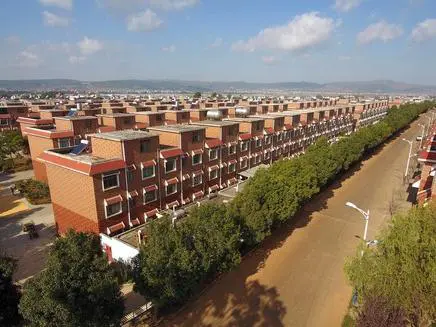China has been dramatically redefining its vast countryside with continuous investment in infrastructure and poverty alleviation as well as technology innovation, said a famous sociologist.
UNLIKE EVERYTHING EVER SEEN
"I come from Europe and Europe is also a very old continent. Some things go slow and some things go so fast (there). But the growth and changes in China are unlike everything I've ever seen," Stephan Petermann told Xinhua at New York City's Solomon R. Guggenheim Museum when the exhibition Countryside, The Future opened to public on Feb. 21.
Petermann, a Dutch architectural researcher and sociologist based in the Netherlands, is among the key contributors to the exhibition which is on view for six months until Aug. 14 and highlights advancements in global rural areas through a series of case studies.
The show is a project of renowned Dutch architect Rem Koolhaas, his research studio Office for Metropolitan Architecture (OMA) in collaboration with students at the Harvard Graduate School of Design; the Central Academy of Fine Arts (CAFA), Beijing; Wageningen University, Netherlands; and the University of Nairobi.
Petermann, a member of OMA for 15 years, said he had been working as a visiting professor at CAFA on the project about China's countryside transformation in the past few years.
"If you see the amount of change (in Dongfeng village) in the last four years, already it's more than I've witnessed in 30 years in Holland. So it goes so rapidly," said Petermann, referring the Taobao Village he went through for the project in China's eastern province of Jiangsu.
Taobao villages are China's rural communities where at least 10 percent of the population makes its living by selling products online -- mostly on Taobao.com, the Alibaba-owned consumer-to-consumer marketplace.
Petermann said he was impressed that Chinese government and Chinese people have such a wide range of consistent policy measures and innovative initiatives to design its countryside.
"They embrace new things. It is such a natural thing for Chinese people. I'm really impressed by that. And it's something that I also try to bring home to try," he said.
"Chinese also have an ability to mix things that we think are impossible to mix, which is another great thing," he said. "And I learned from China basically to be a bit more open towards really mixing new things and finding new inventions."
Petermann said that was a reason why the exhibition featured a section that is "really about Chinese inventions for the countryside" because Chinese find "multiple new platforms, new technologies, new cultural interests in making really the countryside new."
"I see a much more vibrant relationship also between the cities and the countryside," he said. "It's not a thing of the past which is more in America and Europe the case that people think are the countryside, that's of the past."
"We want to show the energy with which China works on its countryside and the engagement sometimes goes well, sometimes not, but at least it's a try. And we can always improve on that," he said. "So I sincerely value that and I think that's a beautiful beautiful thing."
SHOW WINDOW ON TODAY'S CHINA
Drawn from original research on the rapidly changing rural areas across the globe, the exhibition, as Koolhaas said, aims to put the world's countryside, or the 98 percent of the Earth's surface not occupied by cities "on the agenda again."
It is also a unique show window for westerners to see what is really going on in today's China, said Petermann, who has visited China with Koolhaas over 30 times since 2006.
"We have a deep fascination of the country because it's so huge, so diverse, so not understood by a lot of the rest of the world," he said. "We really see it as a mission to tell the rest of the world to come to China to see it, to absorb it, to enjoy it, to maybe sometimes criticize it, but also to just to find a new relationship."
"I think it's a crucial moment that China is inevitably one of the largest players in the world economically and on many levels," he said. "I think that brings us a responsibility to talk more, also to listen and to understand and try to build this relationship, because it's the one that will be the most crucial probably in the future for us."
"This is also why we thought this was such an important moment to show this in America, to show another side of China, in a more friendly tone, a more nuanced tone, more engaging tone, and in a more constructive way," he said.
"This is one thing we want to show here," Petermann said, adding he sees "a lot of potentials" to continue this collaboration with CAFA after this exhibition.
"I plan on staying with the school and its students, like we try to bring some things to China and we take some things home too. We feel this is a a good way to do this type of work and to actually show our intentions."
(by Xinhua writers Yang Shilong, Luo Jingjing)
 简体中文
简体中文

